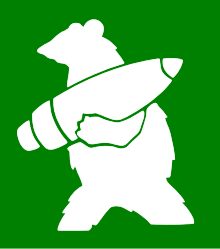If there is but one way to achieve world peace, it is through humanity’s cumulative love for animals. Throughout history, there have been many animals who have contributed during war times. The bulk of these decorated animals – if that is the right term, lived during WW1 and WW2.
Of course, animals such as horses were often used as means of transportation. However, there were specific occurrences that sets these animals apart from their peers. Akin to human soldiers, these animals went above and beyond to earn recognition.
Sgt. Bill – Canadian War Hero

Sgt. Bill looking dapper
While the picture is indeed quite humorous, the goat pictured above rightfully earned its title. Sgt. Bill, henceforth referred to as Bill was brought along by Canadian WW1 soldiers as a mascot. The soldiers avoided quarantine and smuggled the goat into France. Through thick and thin, Bill stayed with his unit. Bill suffered shell shock, trench foot, and shrapnel wounds.
Bill earned a General Service Medal and Victory Medal for his service. How, you ask? An exploding shell was heading towards the direction of some soldiers, and Bill headbutted a few of them into a trench. Effectively saving 3 lives and surviving himself, Bill retired to a life of luxury in Saskatchewan and was decorated with medals.
Rip – Search & Rescue

Rip atop a pile of debris
Rip was awarded with the Dickin Medal for bravery in 1945, after the end of WW2. The dog wore the medal endearingly until the day it passed. It was first discovered in London by the Air Raid Precaution team and they adopted him. Rip oversaw locating people or animals buried in the debris after any air raids.
Rip was not professionally trained. The mix breed terrier instinctively approached the task and in 12 months, discovered over 100 victims of air raids. This served as an inspiration for the higher-ups to train search and rescue dogs.
Wojtek – Artillery Bear

Wojtek and his caretaker
Yes, that’s a bear. A unit of Polish soldiers passing by Iran purchased the bear from a local who found the bear alone after its mother was shot. They raised him the best they could to be a soldier. Wojtek somehow fit in with his compatriots, enjoying wrestling, drinking beer, and taking showers.
To acquire permission onto a British transport ship, Wojtek had to be officially drafted into the Polish army as a soldier. The animal had its own stipend, rank, and serial number. Wojtek live with either the rest of the soldiers in tents or in a specially made wooden crate.
The highlight of Wojtek’s service came during the Battle of Monte Cassino when the bear was tasked with loading 100-pound boxes of artillery shells to the trucks every day until the battle was won Wojtek started his journey as a Private and was promoted to Corporal before he retired to live in the Edinburgh Zoo. They loved him so much that their official emblem was a bear carrying artillery.

Tirpitz – Dinner

Crew of the HMS Glasgow
Originally a source of food for the SMS Dresden, Tirpitz became the mascot of HMS Glasgow during WW1. SMS Dresden was attacked by British artillery and soon found itself sinking. Everyone on board abandoned the ship, and the last to follow was the pig, who leaped from the edge of the boat. Tirpitz frantically swam for dear life and was spotted by the nearby HMS Glasgow. One of the sailors in attendance jumped immediately to save the frightened animal and almost drowned in the process.
Tirpitz lived on the ship and was eventually sent to the Royal Navy’s training facility in Portsmouth Harbour. The pig became too much of a nuisance in the facility, and on instruction of higher-ups was sent for auctioning. Proceeds of the auction directly benefits the Red Cross. Its head was mounted and on display at the Imperial War Museum in London.
Siwash – Marine Duck

Siwash enjoying the scenery
Siwash was the mascot of the First Battalion of the Tenth Marine Regiment, and eventually the ENTIRE Second Marine Division during WW2. He was sent with the Marines to the Battle of Tawara in 1943. Supposedly, a marine won the duck from a poker game in New Zealand. With nowhere to go, the Marine brought him on board. While the Marines were facing their battle, so was Siwash.
Also, an excerpt from LIFE magazine published in 1944 states
‘For courageous action and wounds received on Tarawa, in the Gilbert Islands, November 1943. With utter disregard for his own personal safety, Siwash, upon reaching the beach, without hesitation engaged the enemy in fierce combat, namely, one rooster of Japanese ancestry, and though wounded on the head by repeated pecks, he soon routed the opposition. He refused medical aid until all wounded members of his section had been care of’.
Apparently, the duck wasn’t even a ‘he’, as zookeepers noted that it was a female duck. When she passed in 1954, a service was held in her honour at a taxidermist’s shop.




